- Register
- Log in to Tune-In
- Wishlist (0)
-
Shopping cart
(0)
You have no items in your shopping cart.
Beatles News
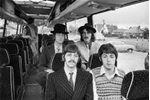
George Harrison said The Beatles needed space to grow. That was one of the biggest reasons they separated in 1970. They all just wanted to fly the nest and experience other things.
During a 1987 interview, Dutch TV pointed out to George that he was only 27 when The Beatles split, yet he’d experienced many unimaginable things. Dutch TV asked what kind of person he was and what he felt when The Beatles split.
George replied, “In no less than 25 words? I don’t know. At the time, when we split, we’d had too much input from everything, all that being closed together, mania, everything like that. We needed a rest from each other, and we needed space to grow.
“I think it’s important because we’re growing all the time and when you, like that situation, it’s just like a family. You’re so close together, and then you grow older, and you want to move, and you want to go into your own house and have your own friends, and that was necessary.
Source: Hannah Wigandt/cheatsheet.com
details
The Beatles included four main band members: John Lennon, Paul McCartney, Ringo Starr and George Harrison. There were other important band mates before they settled on those four. A Beatles historian named two Beatles whom he called calming influences on Lennon. One was another part of the Fab Four, and one was one of their former colleagues.David Bedford was a guest on the Beatles City podcast on Aug. 23, 2020. Bedford has written books and made documentaries about the band. Here are the two other Beatles whom his sources tell him calmed Lennon over the years. Lennon was perhaps closer to McCartney than Starr and Harrison, because they wrote songs together. For one year, The Beatles had Stuart Sutcliffe on bass. Sutcliffe was a classmate of Lennon’s at Liverpool College of Art and he left the Beatles in 1961 to pursue his art.
Source: Fred Topel/cheatsheet.com
details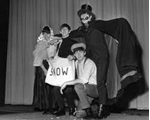
From 1963 to 1969, Paul McCartney, John Lennon, George Harrison, and Ringo Starr recorded a Christmas record for The Beatles’ fan club members. The records were often chaotic, featuring ad-libbed songs, skits, and direct addresses to fans. On their first record, which the band made in the early days of Beatlemania, McCartney spoke directly to the fan club. He told them they were no longer interested in a candy fans had been pelting at them.
The Beatles formed in 1960 and, by 1964, were international celebrities. Beatlemania began in England before 1964, but they reached unprecedented levels of fame on their first visit to the United States. While they appreciated their fans and their new level of success, it could be overwhelming. Scottish concert promoter Andi Lothian recalled how quickly their shows could devolve into chaos.
“The girls were beginning to overwhelm us,” he told The Guardian in 2013. “I saw one of them almost getting to Ringo’s drumkit and then I saw 40 drunk bouncers tearing down the aisles. It was like the Relief of Mafeking! It was absolute pandemonium. Girls fainting, screaming, wet seats. The whole hall went into some kind of state, almost like c details

George Harrison said he was in “another world” while The Beatles recorded Sgt. Pepper’s Lonely Hearts Club Band and Magical Mystery Tour in 1967. He’d recently experienced the essence of spirituality in one of the holiest places in India. It put things into perspective for him.
In Here Comes The Sun: The Spiritual And Musical Journey Of George Harrison, Joshua M. Greene wrote that George felt awkward being back in London after returning from his six-week trip to India. During his trip, he meditated and read spiritual texts at the base of the Himalayan mountains. The beautiful experience catapulted George into spirituality like nothing else.
So, it’s understandable how hard it was for George to return. It was especially hard for him because The Beatles hadn’t had a spiritual awakening and weren’t coming up with exciting ideas.
Source: Hannah Wigandt/cheatsheet.com
details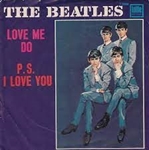
“Love Me Do,” the Beatles’ first single, has never received the plaudits that so much of their output has, and yet, there may have been no more important statement of purpose for the band.
Released in October 1962, “Love Me Do” was also the Beatles’ first hit, reaching #17 in the charts in Britain—even if that was largely because manager Brian Epstein bought up many copies himself, a technique known as “padding.”
The Beatles themselves regretted that they were missing out on the excitement back home—the presumed afterglow of landing a hit—by having to go to Hamburg for a final time as a club band. “Love Me Do” was where the action was, and who could fault The Beatles for wishing to be near their first trace of an epicenter?
The first noticeably different thing about “Love Me Do” is its unusual title. Love me do? The language mirrors a crisp, highly class-conscious, English form of conversation, the province of an older woman in society rather than a working-class Beatle.
Source: Colin Fleming/bestclassicbands.com
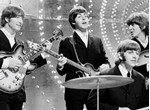
The Beatles‘ “Twist and Shout” has a connection to Van Morrison’s “Brown-Eyed Girl” and some other tracks from the same era. “Twist and Shout” lasted longer on the American pop charts than any of the Fab Four’s other hits. On the other hand, the track only became a minor success in the group’s native United Kingdom. The Beatles playing instruments during the "Twist and Shout" era.
“Twist and Shout” was co-written by Phil Medley and Bert Berns. The latter used the pseudonym Bert Russell. Berns also produced other hits such as The Drifters’ “Under the Boardwalk” and Van Morrison’s “Brown-Eyed Girl.” During a 2014 interview with The Forward, Burns’ son, Brett Burns, felt his father was forgotten.
“My father has been gone for so long that his memory has just drifted away,” he said. “He was the very first of the New York songwriters who ruled over the ’60s Brill Building scene to die, and very young at that.”
Source: Matthew Trzcinski/cheatsheet.com

The Beatles dominated the music industry in the 1960s, but their success only lasted for a decade as the band split in 1970. The world was stunned to learn about the band breaking up, but the four members knew The Beatles would end a few months beforehand. Paul McCartney said The Beatles’ downfall began in 1969, but he was told to keep it a secret until it became official.
There are many rumors and theories that Beatles fans have for why the band broke up. Many believe that tensions between the band had been rising for a while, and they simply stopped being friendly with one another. In an interview with Apple Music with Zane Lowe, Paul McCartney said he and John Lennon never had any significant arguments that would have led to The Beatles disbanding, which is why he was surprised when Lennon announced he was leaving.
Source: Ross Tanenbaum/cheatsheet.com
details
Paul McCartney was always the James Bond producers’ choice to sing ‘Live And Let Die’ in the closing credits of the 007 film, new documents show.
The song, performed by McCartney with Wings, is one of the Beatle’s most successful solo hits as well as the post-credits soundtrack to the 1973 film.
In the years following the track’s release, McCartney and George Martin have both told the story that the film’s producers wanted to replace McCartney with a female singer on the track, assuming that the version presented to them was just a demo.
“He sat me down and said, ‘Great. Like what you did, very nice record, like the score,” Martin wrote in his 1979 memoir All You Need Is Ears. “Now tell me, who do you think we should get to sing it?’ That took me completely aback. [via The Guardian].
Source: Will Richards/nme.com
details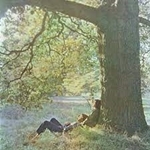
John Lennon’s son, Sean Ono Lennon, praised one of the Plastic Ono Band’s albums.
He said the voice on the album “has a special frequency.”
Sean said the album may have had a negative effect on his parents’ relationship.
John Lennon’s son, Sean Ono Lennon, said one of the Plastic Ono Band’s albums is the greatest album of all time. Subsequently, he explained why the vocals on the album sound so good to him. Notably, the album in question received some negative responses upon its initial release.During a 1998 interview with Rolling Stone, Sean was asked when he discovered his mother’s debut solo album, Yoko Ono/Plastic Ono Band. “She’s my mom,” he said. “It’s not like you discover it.
Source: Matthew Trzcinski/cheatsheet.com
details
Aside from their music and their fan base, The Beatles were known for being “cheeky” lads. Lennon even made a joke in front of members of the royal family. Here’s what his ex-wife, Cynthia Lennon, said about the moment during her 2005 memoir, John.
They might’ve been young and scrappy, but this rock band sparked “Beatlemania” and became of the first British rock groups to find success in America. John Lennon appeared as a founding member of the Beatles, performing with Paul McCartney, George Harrison, and Ringo Starr.
He was part of the songwriting duo “McCartney-Lennon,” co-writing several hits for the Beatles. That includes “Let It Be,” “In My Life,” and “I Want to Hold Your Hand.” Lennon even recorded and released music as a solo artist.
After releasing chart-topping singles and hosting concerts across the United Kingdom, The Beatles appeared in the Royal Variety Performance, performing “Twist and Shout.” The Queen Mother, Princess Margaret, and Lord Snowdon were in attendance.
Source: Julia Dzurillay/cheatsheet.com
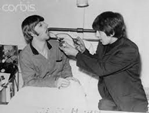
Ringo Starr is one of the best-known drummers in the world. He was an integral part of the magic of the Beatles with Paul McCartney, John Lennon, and George Harrison. Although the Beatles were only together for a decade, their legends live on in the music they created together. But Starr may not have gotten his start with drums if it hadn’t been for a series of childhood illnesses. While he was stuck in bed, he learned to love percussion and the rest, as they say, is history.Starr’s first bout with a serious illness came when he was just six years old. That was when he suffered peritonitis after having an appendectomy. This caused the young Starr to spend several days in a coma, according to Far Out Magazine. After that, he would stay in the hospital for a year, causing him to fall behind in his studies.
Source: Terri Deno/cheatsheet.com
details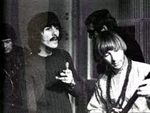
Paul McCartney’s banjo and a certain Monkee helped George Harrison record his debut solo album, Wonderwall Music, the soundtrack to 1968’s Wonderwall. There were other helpers, too, including some of George’s closest friends.
In 1987, George told Timothy White at Musician Magazine that his debut solo album, Wonderwall Music, was historical because it came out four weeks before John Lennon released Two Virgins. George became the first Beatle to release a solo album. However, he was initially nervous about making Wonderwall Music.
George made most of the album’s music in London at the end of 1967. Then, he recorded everything in Bombay and caught the attention of director Joe Massot. George explained, “I don’t know where I met him, but he said he wanted me to do the music to this movie–which didn’t come out until 1968. I said, ‘I don’t know; I haven’t got a guess of how to write music for a movie.’ He said, ‘Aw, we’ve got no budget for the music anyway, so whatever you give me, I’ll have it!’
Source: Hannah Wigandt/cheatsheet.com

The Beatles fans were used to the unusual statements John Lennon, Paul McCartney, George Harrison, and Ringo Starr historically made during interviews. However, in 1963, the group released a Christmas message specifically tailored to their fan club members. What was the real meaning behind their holiday message?
Per Rolling Stone, between 1963 and 1969, the Beatles sent limited-edition Christmas singles to their fan club members every year. These singles were unlike anything fans had ever heard from the Fab Four.
These plastic records consisted of messages, skits, and songs. These rare 45s were hard to come across until 2017, when the Christmas messages were ultimately reissued on vinyl as part of a limited-edition box set titled, The Christmas Records.
During their first fan club Christmas message, the Beatles used wordplay, music, and gags to introduce themselves to fans. Although the 45 had many traditional elements and personal statements, there was plenty of goofing around too. However, the real meaning behind the record was to show gratitude for fans’ support.
Source: Lucille Barilla/cheatsheet.com
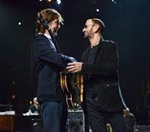
Paul McCartney and Ringo Starr share a unique bond as the only surviving members of The Beatles. Their relationship started deepening its roots almost as soon as Ringo joined the band. The drummer roomed with only one bandmate on tour — Paul. Even before then, Macca knew Ringo was the perfect drummer for The Beatles when he sat in with the group. They’ve been friends for more than 60 years, so it shouldn’t be a surprise Paul wrote a song for Ringo’s ex-wife when she died. It’s a touching ballad, but Paul explained why he didn’t mention her name.
Source:Jason Rossi/cheatsheet.com
details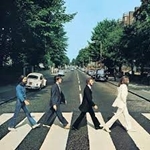
Rarely do you see Elton John – a Grammy-winning Knight of the British Empire – behaving like a bona fide fan boy.
Yet that’s precisely what happens midway through the new documentary “If These Walls Could Sing” (Disney+, streaming Friday), Mary McCartney’s touching tribute to the myriad artists, ranging from The Beatles to Oasis, who recorded at London’s Abbey Road Studios.
John recalls a day in 1969 when he was just a young session piano player on the Hollies’ “He Ain’t Heavy, He’s My Brother." Suddenly, Paul McCartney appeared and promptly sang the recently released “Hey Jude” to the slack-jawed group.
“He probably has no idea what that moment meant to me, but hopefully now he does,” says John, visibly moved.
Source: oakridger.com
details